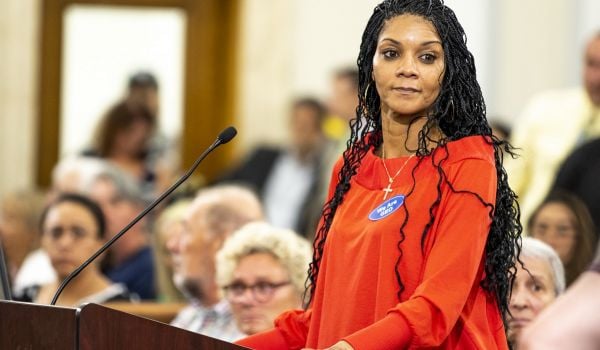As vice president of the Brookings Institution and director of the Institution’s Great Lakes Economic Initiative, respectively, Bruce Katz and Jennifer Bradley have spent years researching and promoting policy reforms intended to help metropolitan regions grow and prosper. In Forefront this week, they wrote about how they believe metros can remain players on the world stage even as the locus of global economic power shifts away from the West.
Next American City reached Katz and Bradley by email to discuss how economic circumstances can force innovation, what factors to measure to indicate economic growth, and why metro regions should stop trying to be everything to everyone.
Next American City: Your piece suggests that to create a successful 21st-century metro region, leaders need to collaborate as networks, not as individual actors. Think tanks and policymakers have long stressed the importance of collaboration. What is different about networks today?

Bruce Katz and Jennifer Bradley: The difference in networks today is that they comprise a much wider range of actors and issues. Collaboration used to be confined to a fairly narrow range of issues, from sharing discrete municipal services across borders to sharing tax base with other jurisdictions. It was focused inward, with local government actors thinking about how they could work with their peers in neighboring communities.
Now, though, metropolitan networks are bigger, broader and bolder — including business leaders, philanthropies, university presidents, community activists and elected officials. Increasingly, these folks have a global orientation — they compare themselves to people across the world and learn from experiments happening in China, India, Brazil, Germany or wherever good ideas are taking root. These networks are concerned with how their places will build the next economy. That includes local services, but goes far beyond it to embrace issues of exports, immigration, manufacturing, innovation. These networks understand that these big, macroeconomic and global issues are not above their pay grade.
NAC: The old saying goes that “necessity is the mother of invention.” Given the financial constraints of many American metros, one would suppose that we’d be innovating to meet new needs. Where are you seeing the economic doldrums resulting in innovative collaboration?
Katz and Bradley: Metros are learning to collaborate around important, economy-shaping endeavors. In New York, there’s an unprecedented collaboration around the city’s Applied Sciences NYC project, which involves consortia of universities from New York and across the world collaborating to create new institutions on city-owned land, to do applied research that marries advances in technology to New York’s major industries of medicine, media and urbanism itself. The first Applied Sciences campus will be housed temporarily in Google’s New York offices, so the private sector is deeply involved here. In San Diego, the city, UCSD, General Electric and a non-profit group representing technology companies are creating a living laboratory to study electric vehicle usage, which will help reduce San Diego’s carbon footprint, support its clean energy sector and give it specialized knowledge it can sell to other places.
And metros are learning to invest in what matters. In Chicago, the city has created a new infrastructure bank, a public-private collaboration to move major infrastructure investments and create 30,000 jobs over the next three years. In L.A. and Denver, there are ambitious metro efforts to extend transit systems. In Puget Sound, there’s a big effort underway that brings together school districts, the University of Washington, the community college district, Seattle and the Gates Foundation to close the achievement gap for minority students in South Seattle.
NAC: You urge metros to measure what matters. What types of measures should metro regions focus on other than typical indicators of economic growth?

Katz and Bradley: Measure exports: Find out how many companies export, what they export and where it goes, so you understand who your trading partners are and can cultivate and enhance those relationships. Measure immigrants: Where are they coming from and what ties can they cultivate with their home countries, for the same reason. Measure your industry clusters: Not just your major employers, but the intricate web of suppliers, support services and spinoffs that healthy sectors generate so that you understand what gaps you need to fill in your local economy and what supply chain relationships draw you into a new network of shared interests. This is hard to do, particularly since this country appears to be in the process of gutting its statistical and data gathering infrastructure, but this is how metros will learn where they stand in the global economy and how they can move forward.
NAC: Finally, many metropolitan regions try to be everything to everyone. Why should metros avoid this tendency?
Katz and Bradley: The short answer is trying to be everything to everyone is a fast way to fail. Denver and Detroit have different histories, different industrial possibilities and different strengths, as do Charlotte and Chicago, Miami and Minneapolis. Places do best when they build on and extend their strengths rather than chasing after the latest economic development fads. As Jane Jacobs said, new work grows out of old. That’s a great notion because it indicates that you can’t be complacent, you can’t stay still while the world changes around you. But at the same time, you can’t create a world class specialization in a field overnight. No one can. Where you start, the capacity of your people, the global connections of your industries — that’s your competitive advantage. Don’t try to be the next Silicon Valley. Be the 21st-century version of yourself.

Diana Lind is the former executive director and editor in chief of Next City.







_920_518_600_350_80_s_c1.jpg)
_600_350_80_s_c1.jpg)







